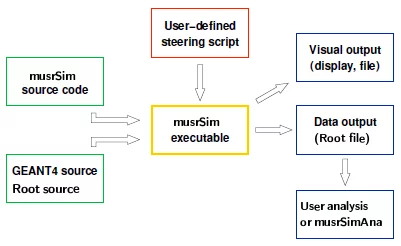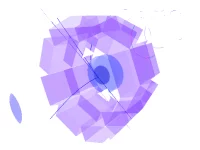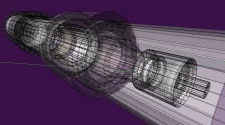Numerical simulations in µSR
The increased use of numerical simulations in recent years has demonstrated the potential of Monte Carlo methods also for the µSR technique, where it has opened up new application possibilities by offering:
- New insights on the basics of µSR.
- A better understanding of the existing spectrometers, allowing a targeted performance improvement.
- The design and optimization of new instruments.
GEANT4 as a simulation framework
GEANT4 is a Monte Carlo radiation transport toolkit which includes a complete range of functionalities required to build flexible simulation frameworks. The main features of the musrSim program:
- Great user friendliness:
Only one program (executable) for different muSR instruments (different studies).
The geometry and other parameters defined in the macro file.
Ideally, no C++ knowledge required. - Any geometry and material:
Simple geometry defined in the macro text file.
Complex shapes (e.g. volumes with holes) can be predefined in the source, and finaly defined in the macro text file. - Any electromagnetic field:
From field map or constant field.
2D, 3D and axi-symmetric.
Whatever field superposition.
- Root format outputs
a. New insights on the basics of µSR*
The versatility of the new tool has permitted the modelling of the incoming muon beam, the study of the outgoing positrons behaviour, the investigation of the geometrical effects, etc.
b. Simulation-based instrument design
The new, high magnetic field instruments being built at RAL and PSI, whose design is entirely based on realistic Monte Carlo simulations, represent another example of the usefulness of numerical methods for the µSR technique.
Future uses of the developed platform could include also:
- Feasibility analysis
- Experiment planning and optimization
- Use as an interactive didactic tool
For more information on G4 Monte Carlo simulations in µSR one can refer to the following poster and the related paper.
This project was supported by the EC under the 6th Framework Programme through the Key Action: Strengthening the European Research Area, Research Infrastructures. Contract no.: RII3-CT-2003-505925.
Source code of musrSim
The source code and compilation instructions can found on the musrSim git repository. The program musrSim is intended to be a general tool for the whole µSR community. A valuable addition to musrSim is a general analysis program musrSimAna (also included), which can be used to analyse the output of the simulation, i.e. to create muSR histograms and spectra from the musrSim results. To compile and run musrSim, the user must have Geant4 and Root already installed. musrSim is being updated to compile with recent Geant4 (currently v11.0.3) and Root (currently v6.26). Please help us by submitting bug reports, fixes and improvements to the source code.
References:
- S. Agostinelli, et al., (GEANT4 Collaboration), Nucl. Instr. and Meth. A 506 (2003) 250.
- T. Paraïso, et al., Physica B 374 (2006) 498.
- J. Allison, et al., IEEE Trans. Nucl. Sci. 53 (2006) 270.
- T. Lancaster, et al., Nucl. Instr. and Meth. A 580 (2007) 1578.
- T. Shiroka, et al., Nucl. Instr. and Meth. A 591 (2008) 306.
- Z. Salman, et al., Physica B 404 (2009) 978
- T. Shiroka, et al., Physica B 404 (2009) 966.
- K. Sedlak, et al., Physica B 404 (2009) 970.
- K. Sedlak, et al., Physica B 404 (2009) 974.



